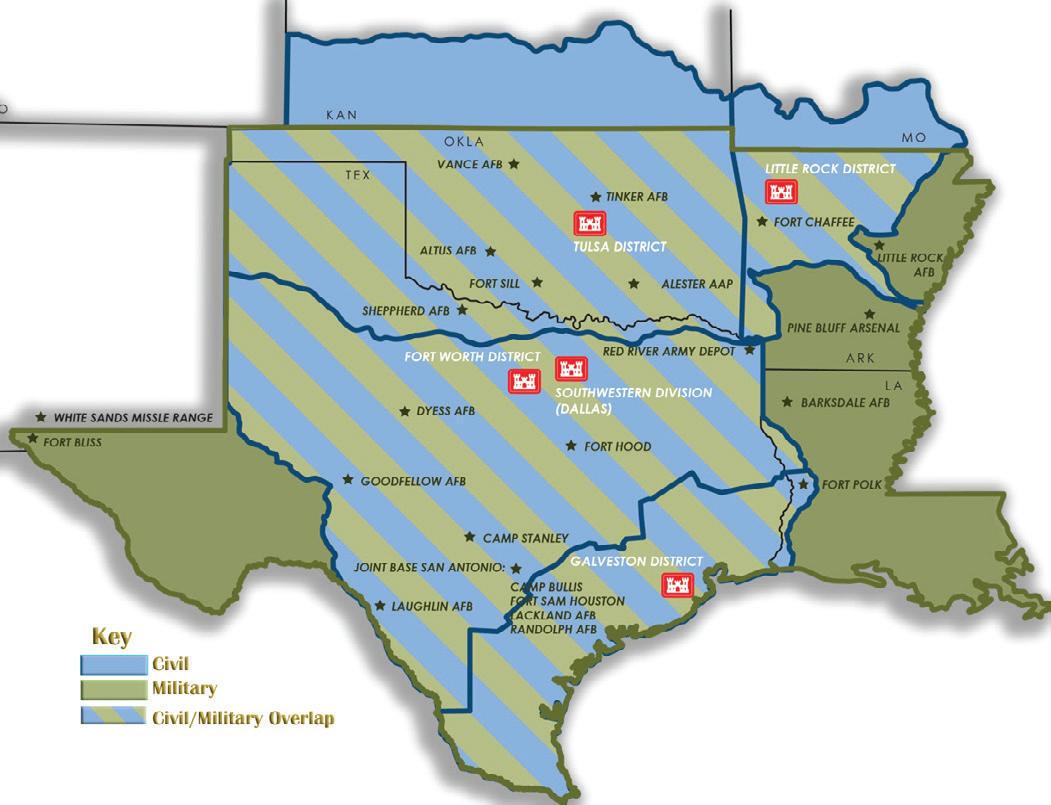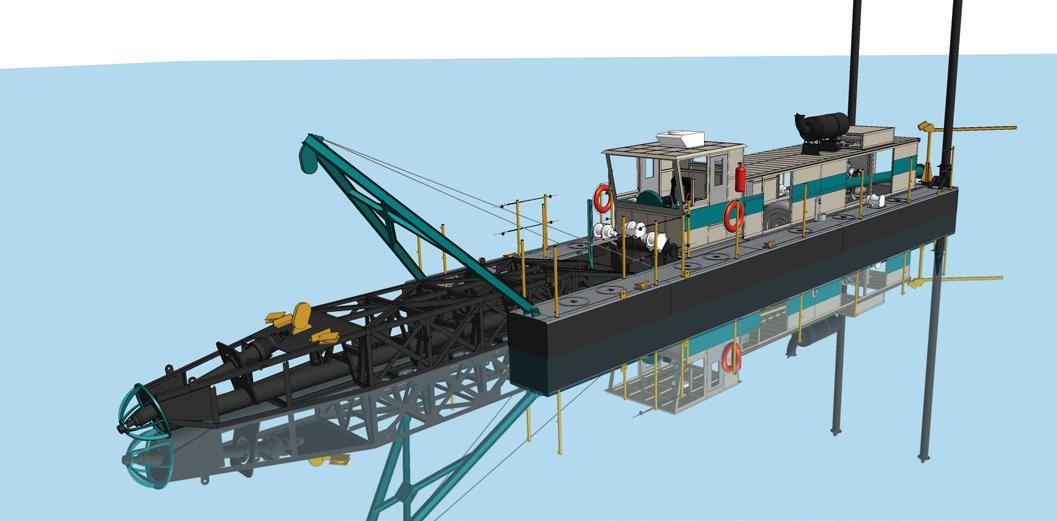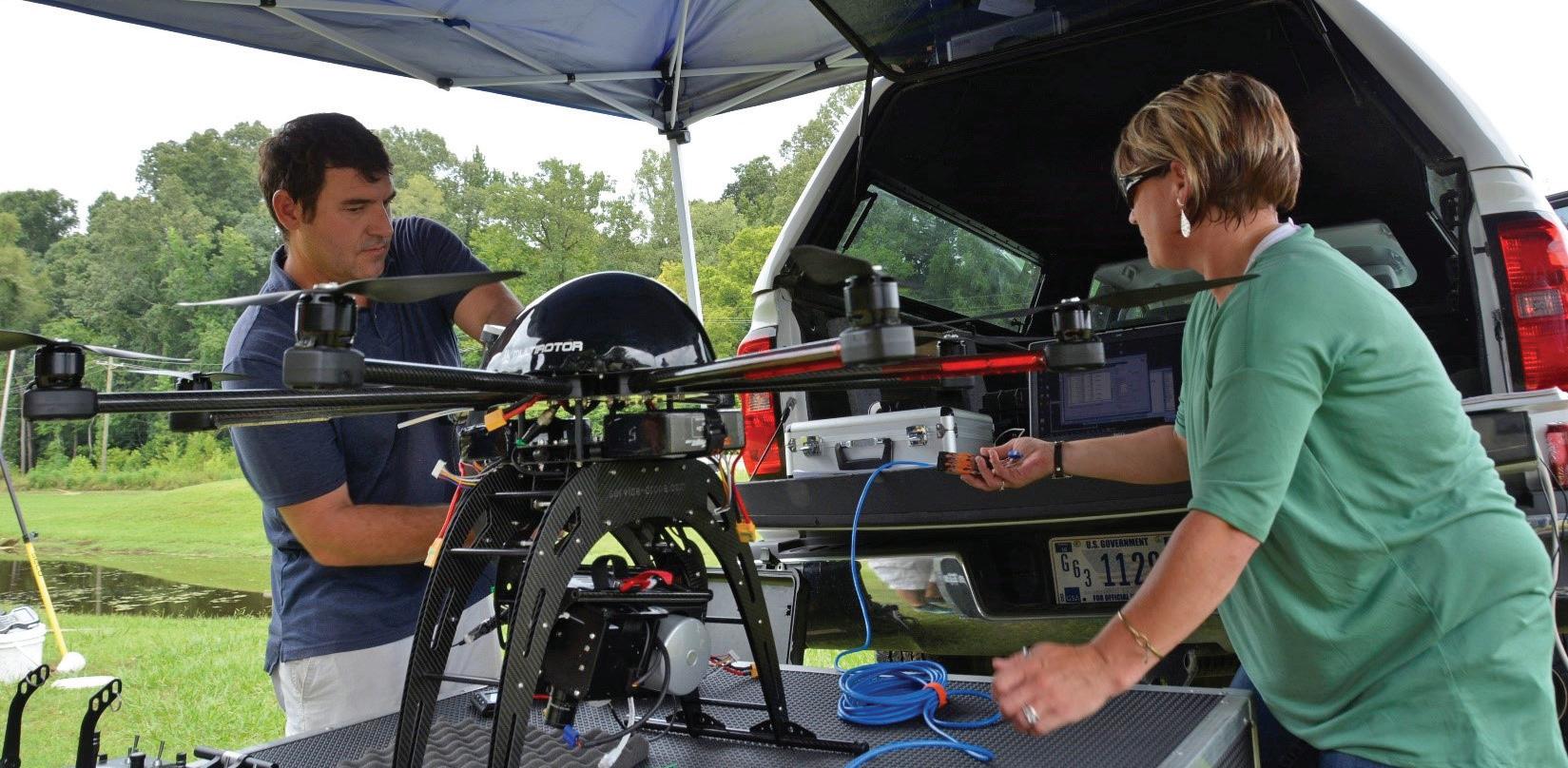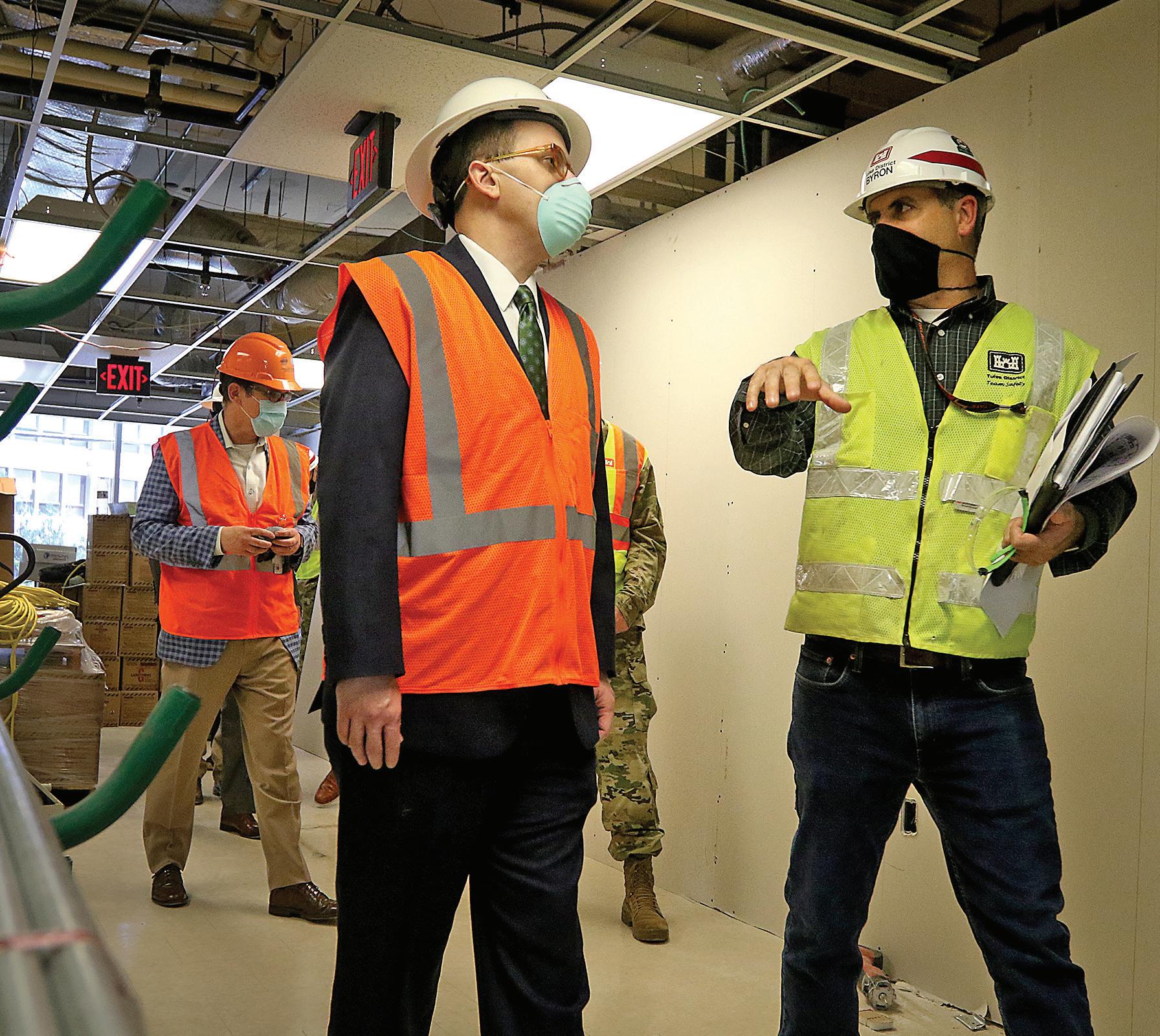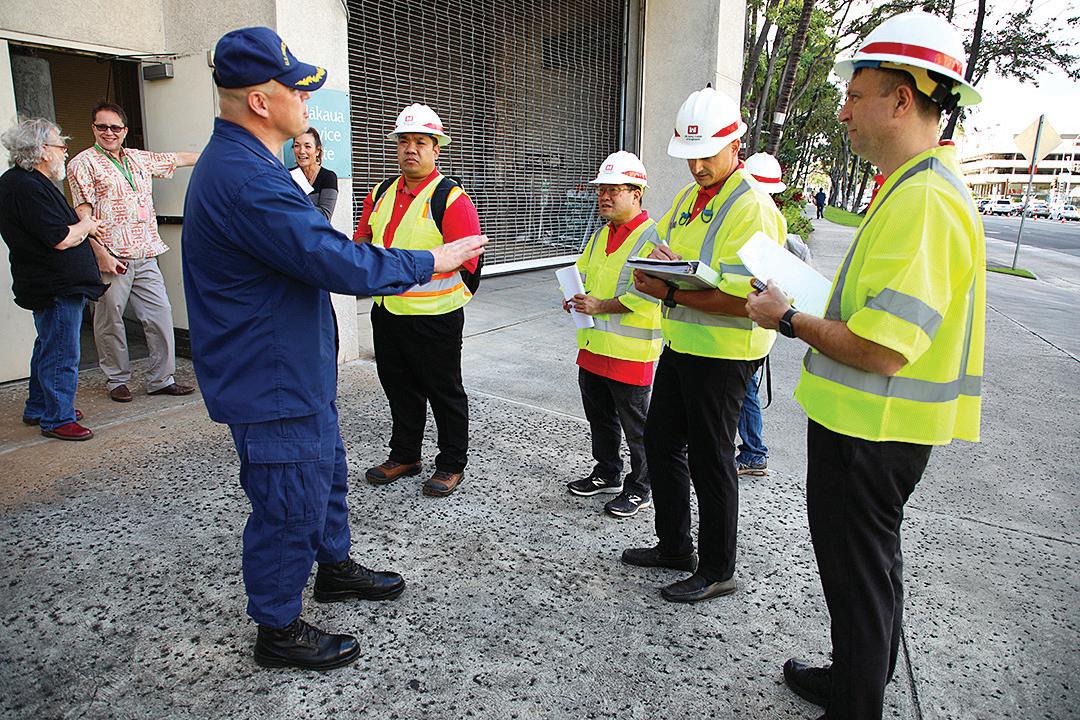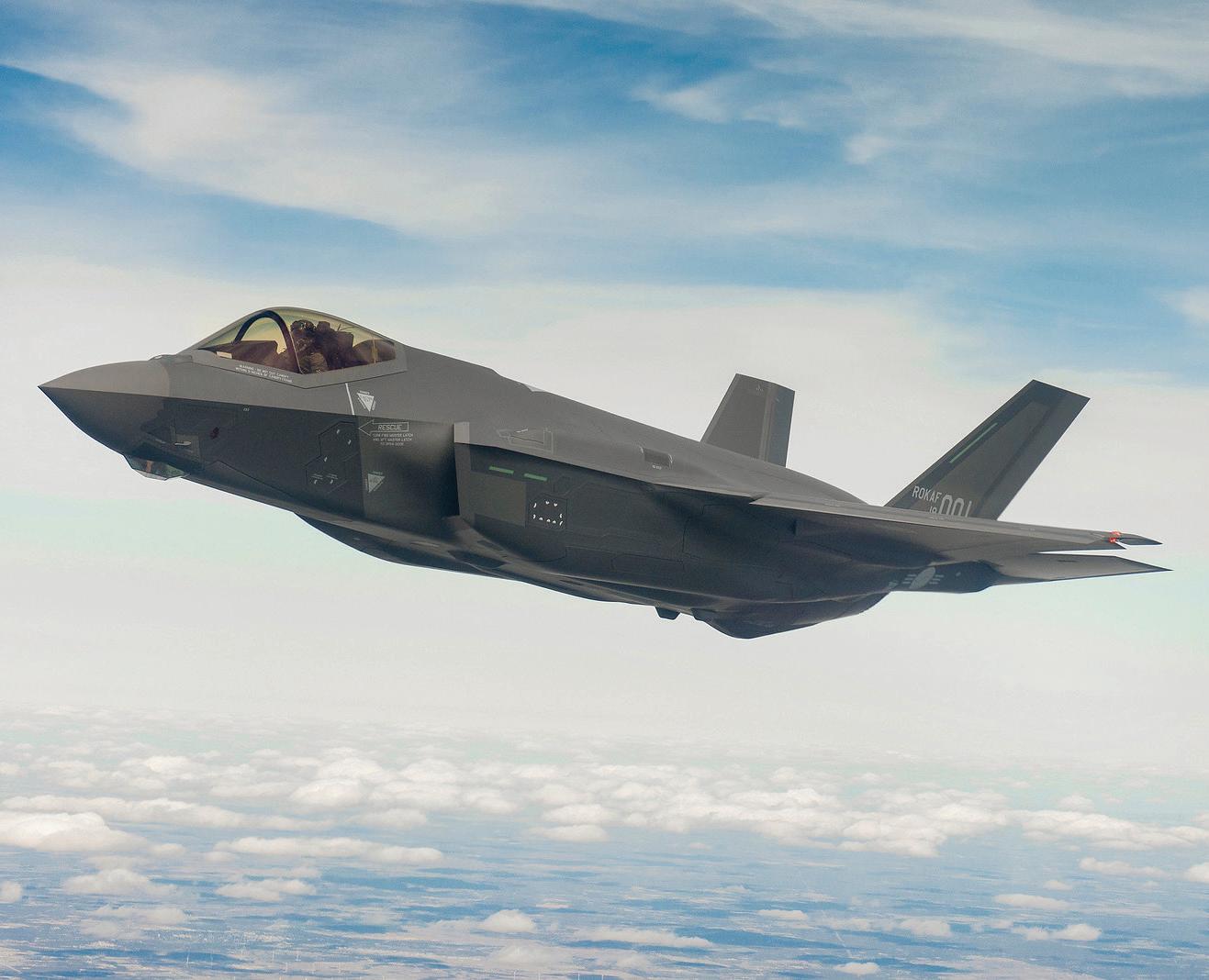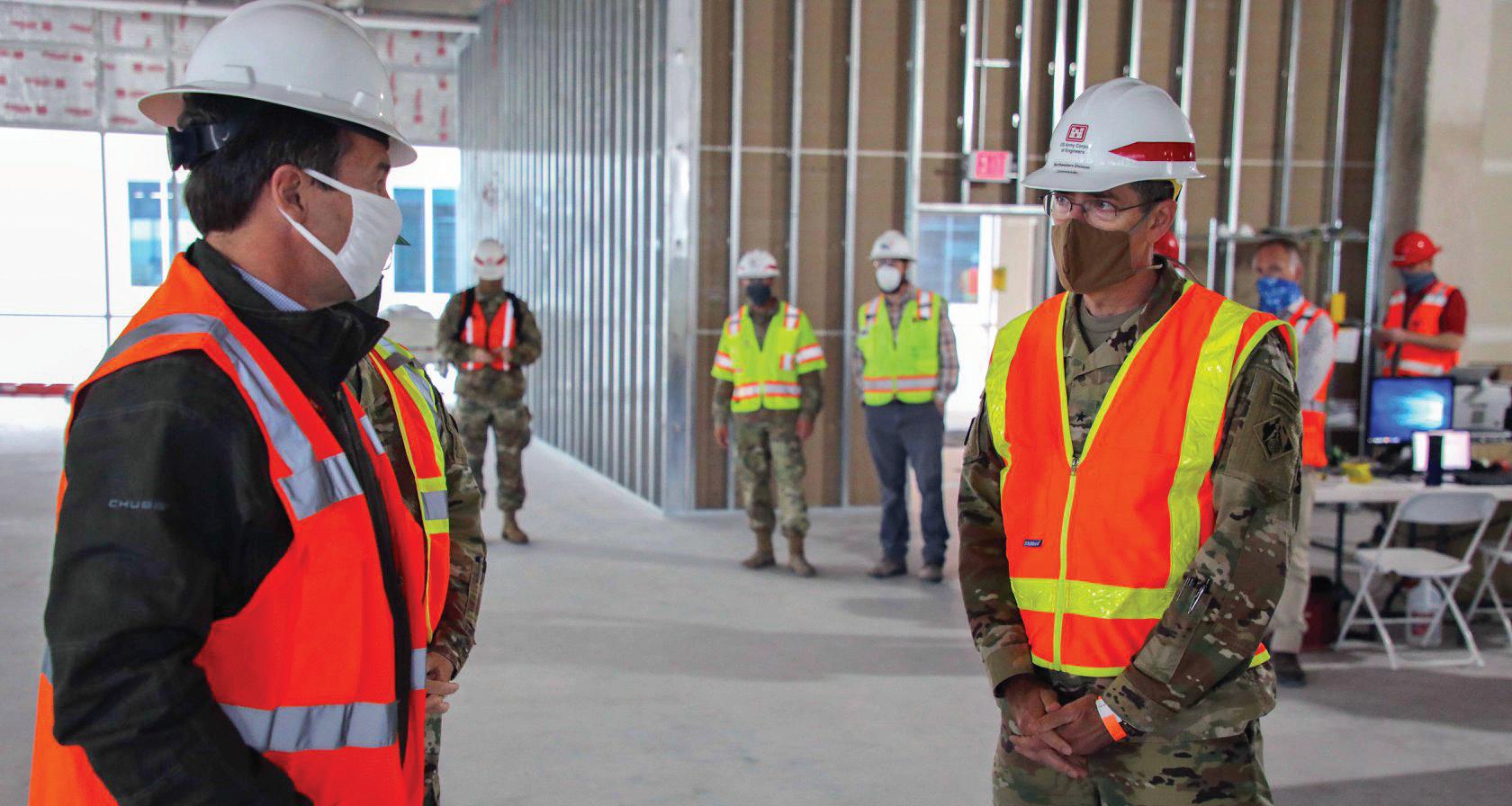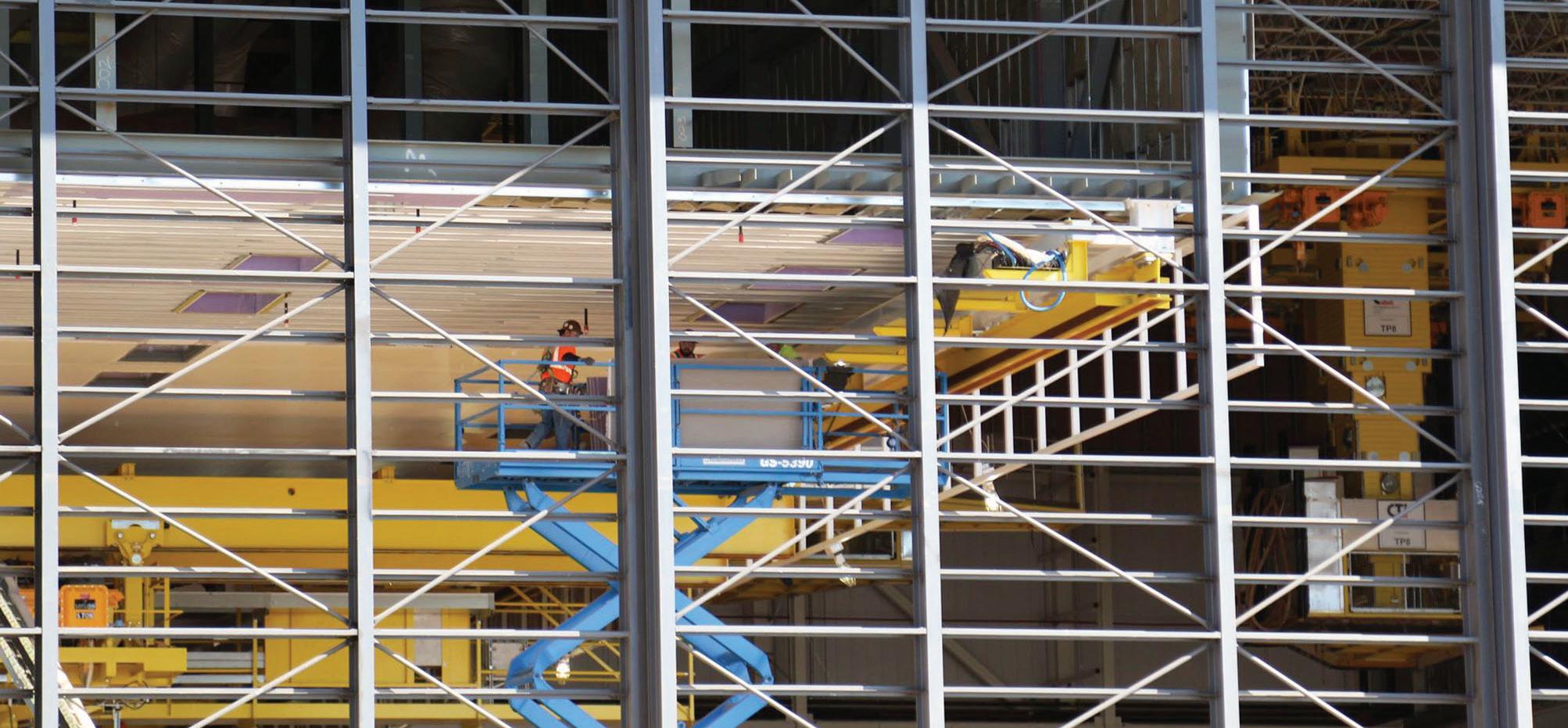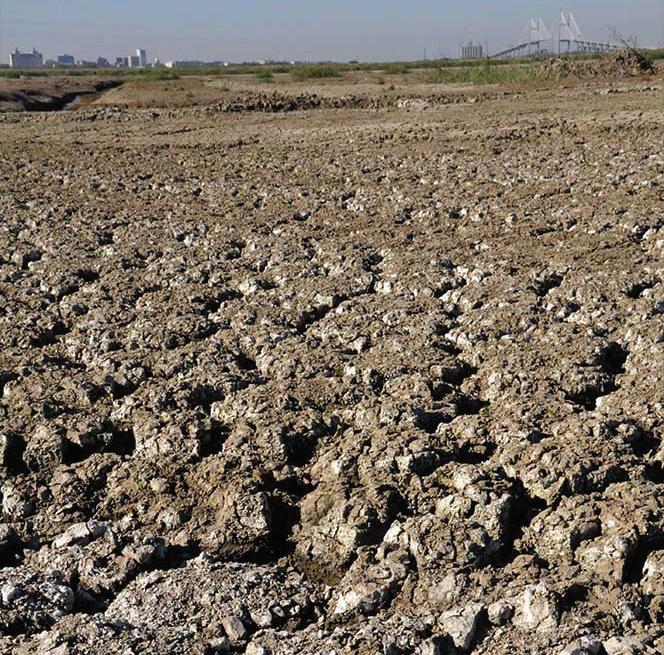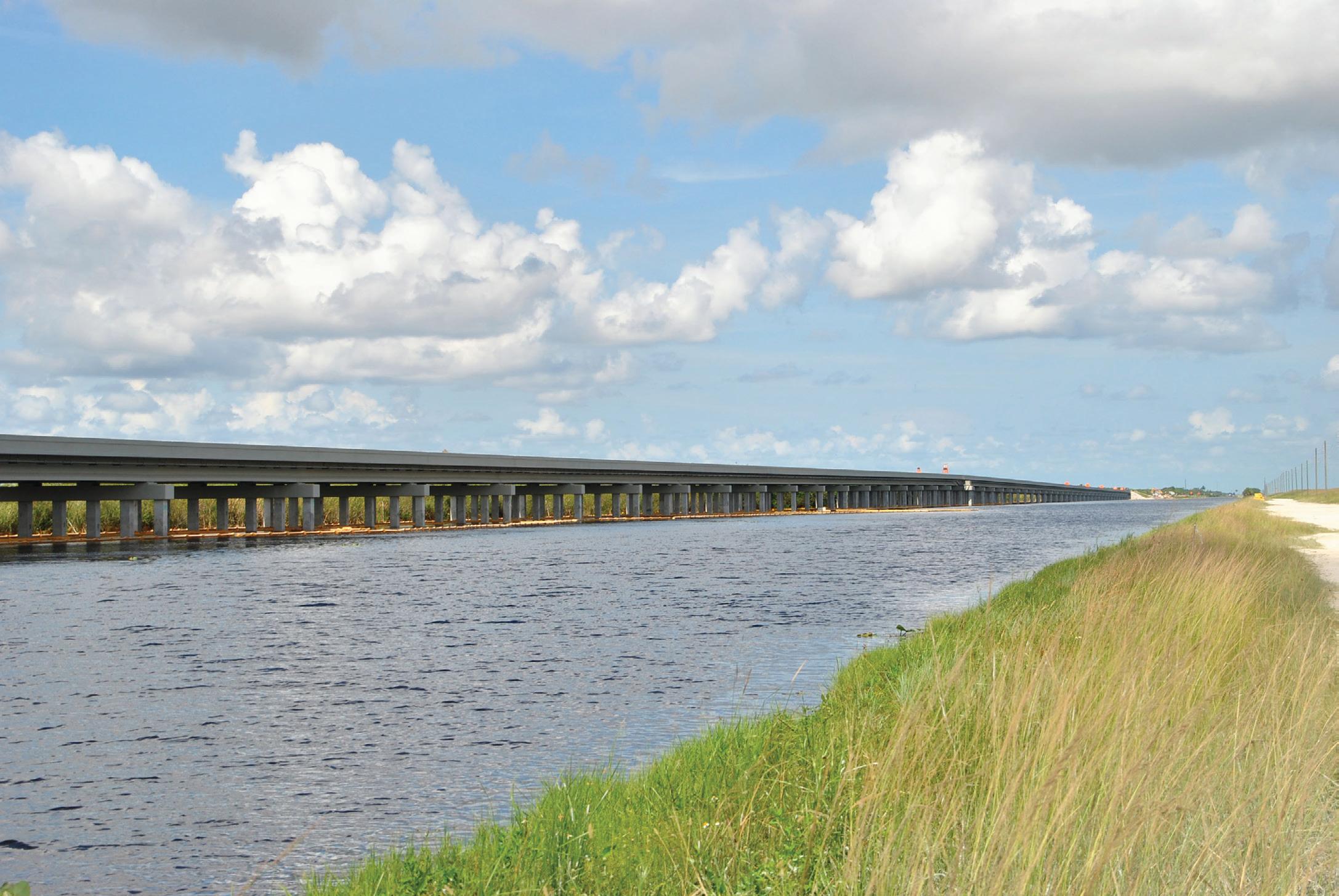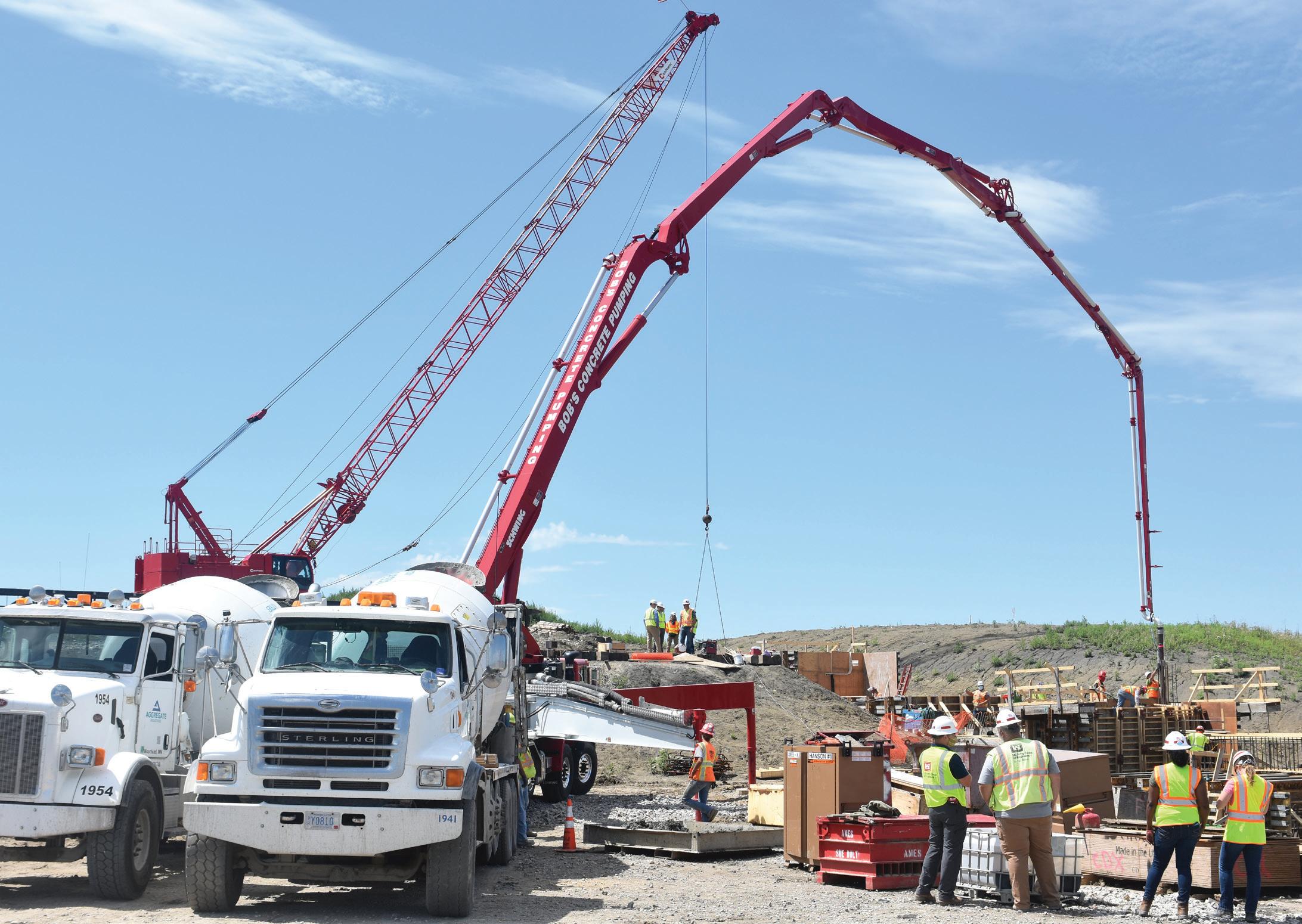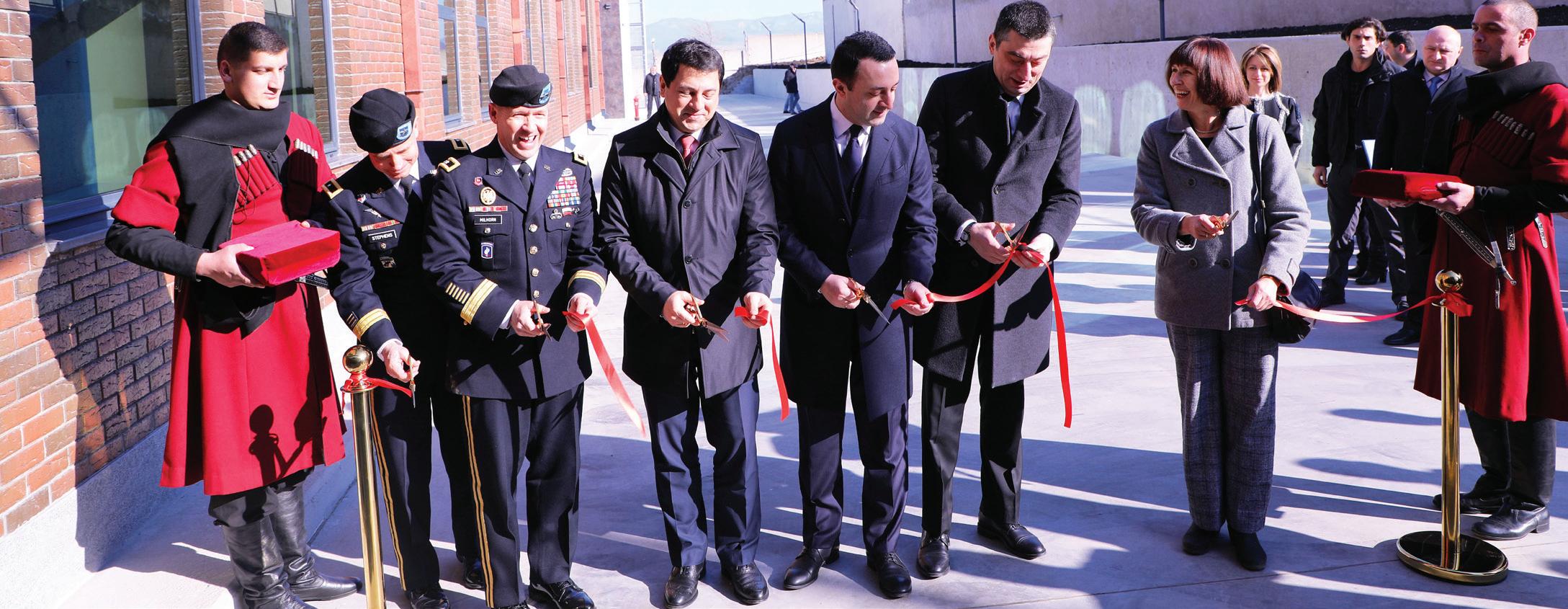Doss immediately put a core team together, and contacted Tony Travia, chief of the Medical Facilities MX, tasking him to join Semonite and meet with New York Gov. Andrew Cuomo to discuss these concepts to address the hospital bed shortage. “I had just gotten off self-isolation from a temporary duty assignment in Germany,” Travia said, “but I had already formulated what information we might need to deliver, reaching out and engaging partners outside the Corps, tapping into the command surgeon’s expertise and HHS to gather what information it already had about alternate care facilities. “By the time I boarded the plane, we probably had the 80% solution of what became the first hotel-to-health care concept, and started working the arena,” he said. By mid-March, the MX was fully engaged and actively developing concepts to convert arenas and hotels into ACFs. Travia explained the challenges the team had to overcome. “Our standard mission is to perform group design review and construction support for medical treatment facilities,” he said. “This is 138
Jelani Ingram, acting Architecture Branch chief with the U.S. Army Engineering and Support Center, Huntsville, takes notes during a site assessment in Tuscaloosa, Alabama, April 6, 2020, with a group including hospital staff and administrators, as well as his colleagues from Huntsville Center and an engineer with the Mobile District.
typically for new construction, though sometimes that may consist of additions or alterations.” He explained that these particular FEMA mission assignments entailed converting facilities not normally configured for the treatment of hospital patients. “Every district has those core competencies – engineering, architecture, and environmental – permitting disciplines,” Travia said. “But districts may only execute a medical project once in a decade and may not have the time to build that experience from scratch. That’s why

